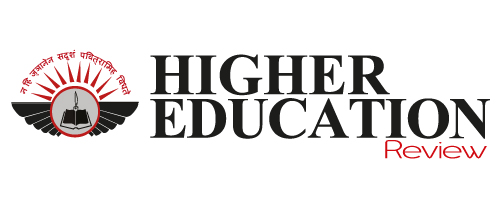Fundamental Flaws of NAAC Accreditation System and its Potential Solutions
 National Assessment and Accreditation Council more commonly known as NAAC is an autonomous body operating under the University Grants Commission (UGC) and it assesses and certifies higher educational institutions with grading as a part of the accreditation. Recently, NAAC has come under scrutiny over bribery allegations related to the rating of Maharaja Sayajirao University of Baroda. When NAAC released the institute’s ranking, the score received by the institution increased from A to A+. After this change, there have been allegations surfacing that the institution tried to influence the peer review team with cash as well as other favors. Officials from NAAC have termed these allegations as false.
National Assessment and Accreditation Council more commonly known as NAAC is an autonomous body operating under the University Grants Commission (UGC) and it assesses and certifies higher educational institutions with grading as a part of the accreditation. Recently, NAAC has come under scrutiny over bribery allegations related to the rating of Maharaja Sayajirao University of Baroda. When NAAC released the institute’s ranking, the score received by the institution increased from A to A+. After this change, there have been allegations surfacing that the institution tried to influence the peer review team with cash as well as other favors. Officials from NAAC have termed these allegations as false.
The Process
The present day approach of NAAC assessments can be described as ‘input-based’ as they have to heavily rely on the self-assessment reports which are made by the institutions who apply for NAAC accreditation. These reports will include myriad of quantitative as well as qualitative metrics related to the institution. After which, the validity of this report is checked by NAAC expert teams. This is followed by peer team visiting the institution.
Even though, over the years, NAAC has been able to grow into one of the most important higher education institution accreditation bodies in India, it is far from perfect. Let’s analyze some of the most important flaws in the NAAC accreditation system and how it can be improved.
Laborious and Archaic
This is one of the most fundamental problems of NAAC. All the application related paper works should be completed in the prescribed manner only and incomplete documentation can result in longer turnaround times. At times, this can even lead to the rejection of the application. Even if the accreditation application passes through the first two procedures, peer team visits and the final accreditation can still take further time as well. And because of the laborious and at times unnecessarily tedious procedures, the council is aiming to reduce the role of peer team visits in the accreditation process.
When it comes to structure, German accreditation system is unique as it has ten agencies that are authorized by the national accreditation council in order to assess the quality of higher education in Germany. And even though, some of these are more general in their scope, the others focus on specific areas such as STEM or business administration to name a few. This will help these bodies to focus on one particular group of higher education institutions which makes it much more effective and quick when compared to just one institution ranking every type of higher educational institutions in the country. At the same time, having academic stream-specific accreditation bodies will make it easier for educational institutions to get a more accurate grading in a much less time.
The Importance of Regional Accreditation Bodies
According to the All India Survey on Higher Education portal, there are 1,043 universities and 42,343 colleges in the country. Out of this, according to the data on June 21, there are only 406 universities and 8,686 colleges that are accredited by NAAC. This data highlights the bigger problem with NAAC accreditation and its procedures as even though the UGC has made it mandatory for higher educational institutions to get assessment and accreditation, the major share of the HEIs in the country are not applying for NAAC accreditation. And to tackle this challenge, NAAC recently did explore the potential of a new system. Called the Provisional Accreditation for Colleges (PAC), this new system will allow even one-year-old institutions to apply for NAAC accreditation. That said, unlike the five year validity with NAAC, this provisional certificates would only be valid for two years. Later, the committee who was studying the possibilities of PAC observed that the implementation of this new system can lead to the determent of quality.
This is where the importance of having regional accreditation bodies comes into play. These entities will be able to reach out to more institutions in a particular region, help them improve the quality of education and get accredited in a much more efficient manner. Spain is one country that follows this model of having regional accrediting bodies. The first such regional body- the Catalan University Quality Assurance Agency (AQU) was established in 1996. Most of the other regional accrediting bodies were founded between 2001 and 2005. The US is another country which follows a similar model where they have six regional accrediting bodies that takes care of the accreditation activities of each region. These six entities are officially recognized by the US Department of Education.
Limited Scope for Assessments
As mentioned earlier, the current input-based NAAC accreditation process relies heavily on the inputs i.e. the self assessment reports made by individual higher education institutions. This limits the scope of the overall independent assessments NAAC can do. And this adversely impacts the overall accuracy of the grading process. To deal with this issue, it is important that the NAAC accreditation process shift from input-based to outcome-based where the priority is given to find if the students of a particular institution are equipped with the relevant academic capabilities as well as skills. And instead of asking educational institutions for only their self-study reports, NAAC should ask HEIs to provide further evidence such as continuous assessment tasks as well as learning materials.
One of the best examples of accrediting bodies assessing the learning outcomes of an educational program is NVAO. This is an independent accrediting organization that was established by the Dutch and Flemish governments. And in the Netherlands, NVAO assesses the quality of educational programs that are offered at research universities as well as the universities of applied sciences. Apart from the normal quality parameters many other accreditation bodies take into consideration, NVAO also analyses the real life relevance as well as compatibility of programs with the requirements of the local economy. This helps NVAO to understand whether the programs offered by educational institutions are relevant to the present day society or not. For students in Netherlands, another unique advantage of enrolling in an educational institution that is recognized as well as accredited is that it qualifies them for grants and free public transport pass. As a result of this, more students aspire to pursue their higher education in such institutions. And this in turn makes it harder for below-par non-accredited colleges to survive.
In the coming years, NAAC and its accreditation processes might see a major overhaul with a white paper prepared by NAAC stating that the system of assessment and accreditation in India must be aligned with NEP 2020 and Sustainable Development Goals 2030. It also adds that technology-enabled, real time formative assessments should be introduced to streamline the entire process. Another important change that might happen with NAAC is that instead of graded accreditation, higher education institutions might have binary accreditations in the coming years.

